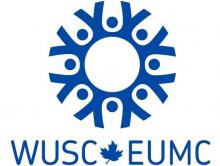by Elizabeth Reid
In the Winter of 2020, I had the opportunity to work with the communications department at the World University Service of Canada, or WUSC, to help sort through decades worth of documents, photos, and other forms of media stored in its Ottawa office. Shortly after the First World War, WUSC, under its original name, European Student Relief, was created in Switzerland to help support European students displaced by the war. Although the archives I had the chance inventory did not span all the period back to the 1920s, they helped to paint a picture of the work WUSC has done in the last several decades, and the aid they have been able to provide to students on an international level. While most of WUSC’s archives are held in an off-site storage facility, a small portion of them are still stored in their main office and needed to be inventoried.
Before actually stepping foot in the archives, I wanted to determine the approach I was going to take in order to maintain the contents’ original organization while also cataloguing the contents in a way that would make it easier for anyone wanting to search for specific material at a later date. As was suggested to me by Dominique Marshall and Chris Trainor, the historian and archivist who advised me, I created a set of categorizing documents to help keep track of any important information that I came across while I was simultaneously creating the inventory list of the archives. These category documents, which included ‘Programs/Organizations,’ ‘People,’ ‘Chronology,’ and ‘Bibliography,’ allowed me and anyone with access to look through some of the content found within the archives in a different context. Should someone be looking for material related to a specific timeframe or WUSC program, the ‘Inventory’ list may not be the most helpful resource, but the ‘Chronology’ or ‘Programs’ documents would place material in those contexts.
Other resources, such as previous years’ annual reports and a (mostly) complete history of WUSC, that were provided to me by Stephanie Leclair at WUSC, helped to fill in the ‘Chronology’ and ‘Bibliography’ documents in particular. These resources also made for some interesting connections between WUSC’s past and present. By reading through past annual reports, it became possible to compare the original goals of aid programs with the results or the ongoing goals of those same programs.
Once I had found a way to efficiently categorize WUSC’s archives, I began to work with the archived material itself. The room where they were stored was not very large, but the floor to ceiling shelving was filled with documents, photos, and other visual media that would help to trace the history of WUSC as far back as the 1950s.
I decided to work through the file boxes and folders in a somewhat sequential order, starting at the top left of the shelves and working my way down. This made for several jumps in time in terms of when the content was created, moving sometimes from photos taken in the 2000s to reels of film created in the 1960s. This way of sorting through the archives did, however, make the other documents I created particularly useful. Even if the chronology of the ‘Inventory’ list was not in order, I could take note of important dates, people, and events in the separate documents that were organized in alternate ways.
Among the files that I came across, one of the most interesting was a scrapbook created by a group of WUSC staff about their trip to Europe in 1950. The scrapbook, which was dated July 5th – August 12th, included photos from the group’s days in Holland and France, complete with pamphlets from their day trips, ticket stubs from inter-city travel, and programs from various plays and operas they attended. Though not included in the same scrapbook, there were also newspaper clippings reporting on several meetings and conferences from the same time frame, presumably the reason for the WUSC staffs’ trip to Europe.
Despite the fact that the time I was able to physically spend in the archives was cut short by the spread of COVID-19 in mid-March, I am grateful for the opportunity to work with this kind of historical content first-hand. I would like to thank the communications department at WUSC for being so welcoming during this term, and Dr. David Dean and Dr. Dominique Marshall at Carleton University for making this practicum possible and facilitating the entire process.
Elizabeth Reid is a fourth-year student in History at Carleton University and was registered in HIST 3807, Practicum in History, during the Winter 2020 semester. Elizabeth completed her practicum under the supervision of Stephanie Leclair, Senior Manager of Communications and Philanthropy at WUSC, and with advice from Dominique Marshall, from the Department of History at Carleton University, coordinator with CNHH, and historian with LERRN, and Chris Trainor, head of Archives & Special Collections at Carleton University.




